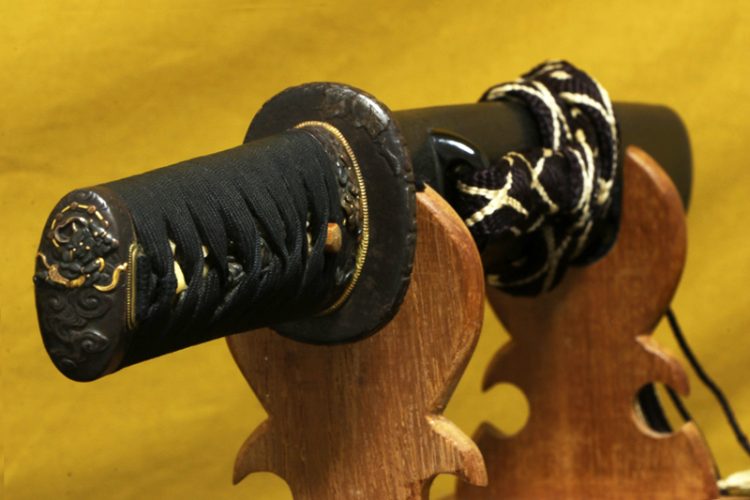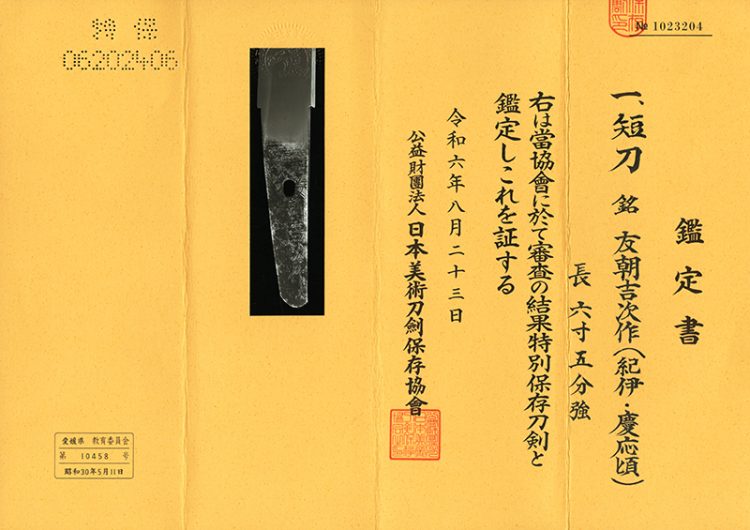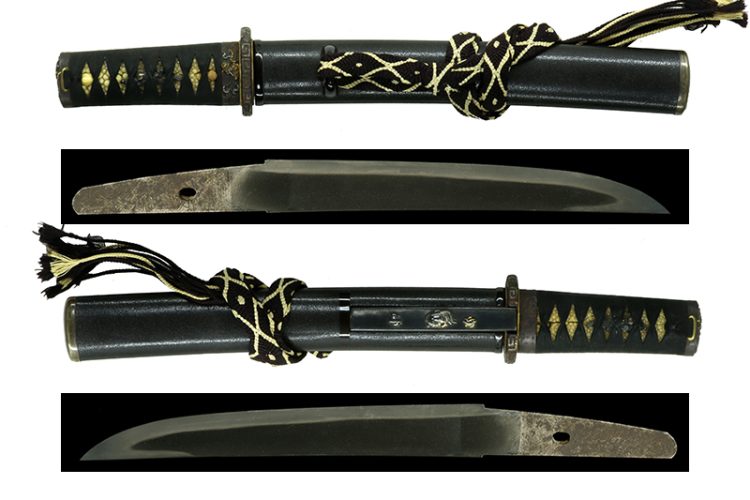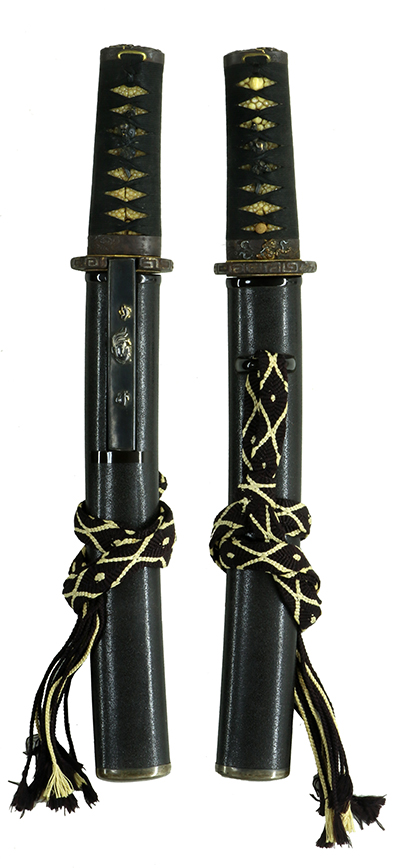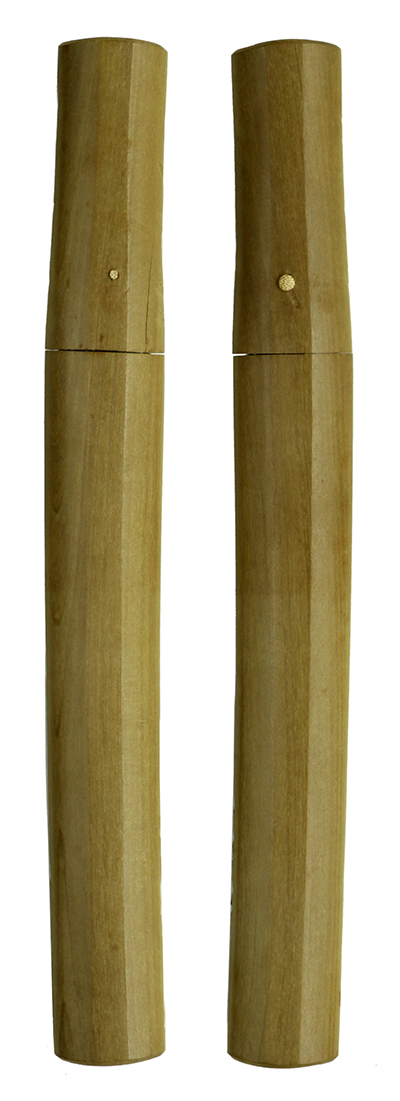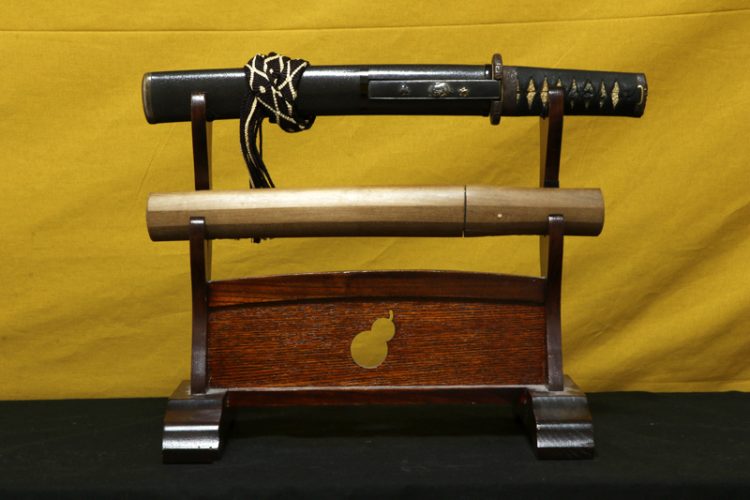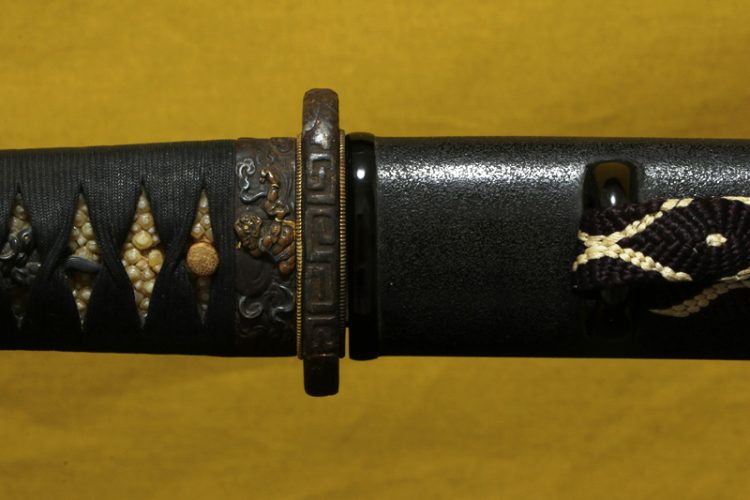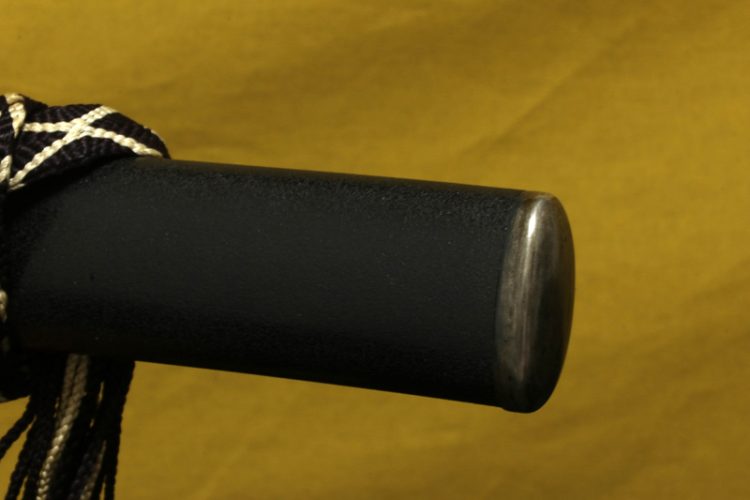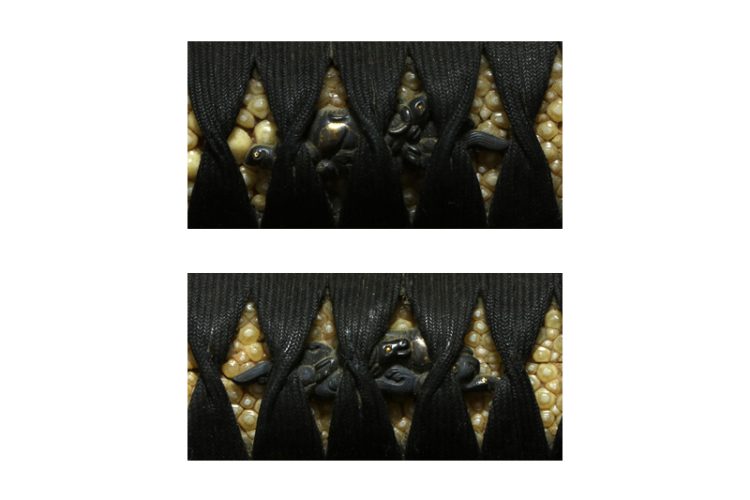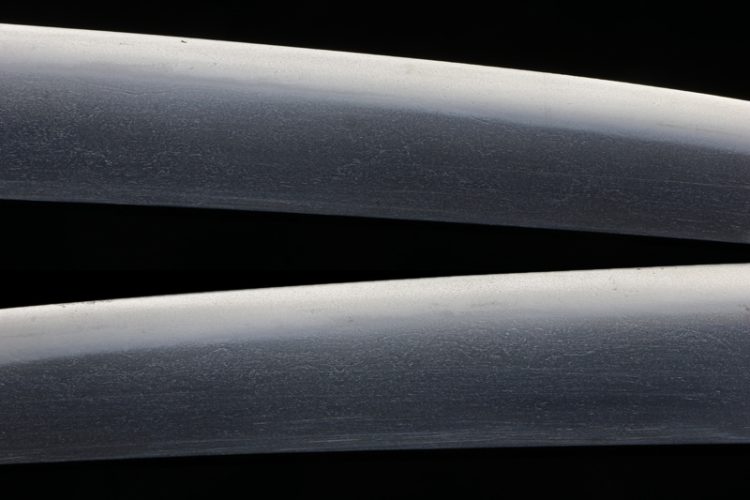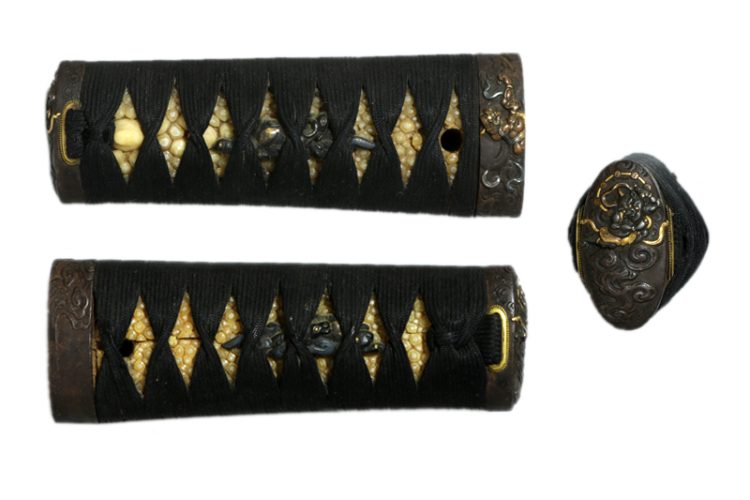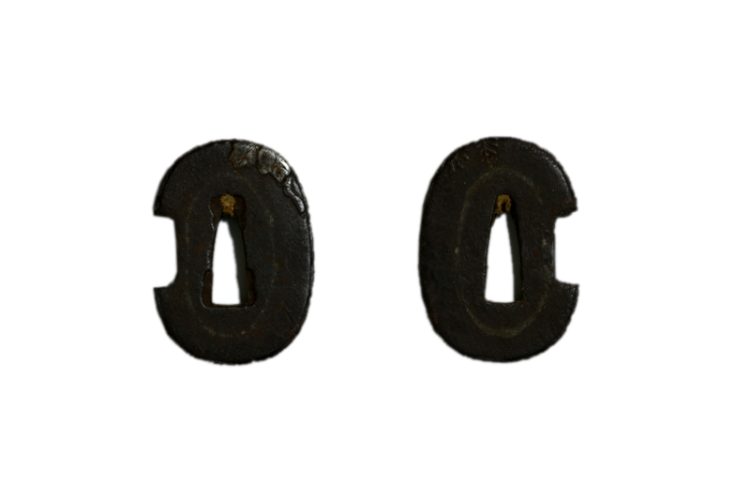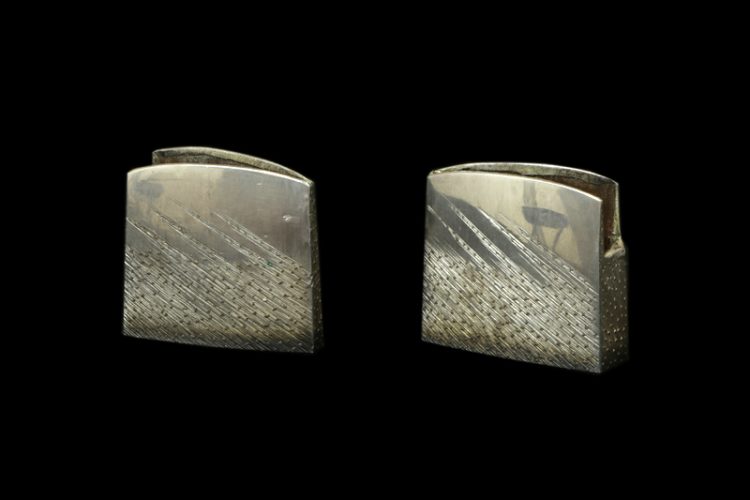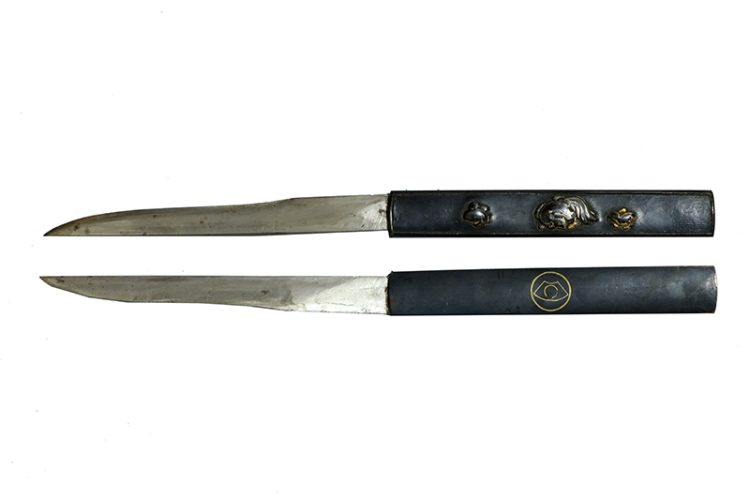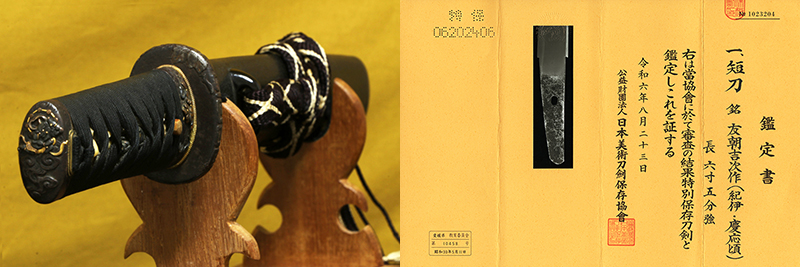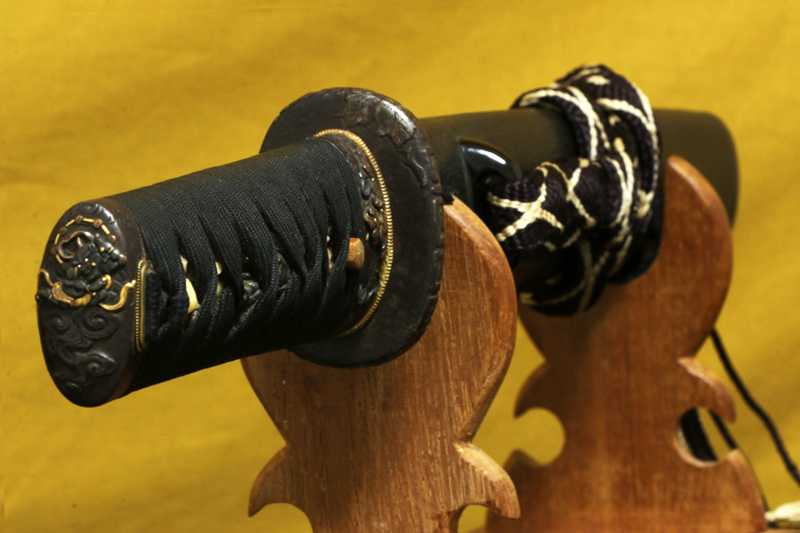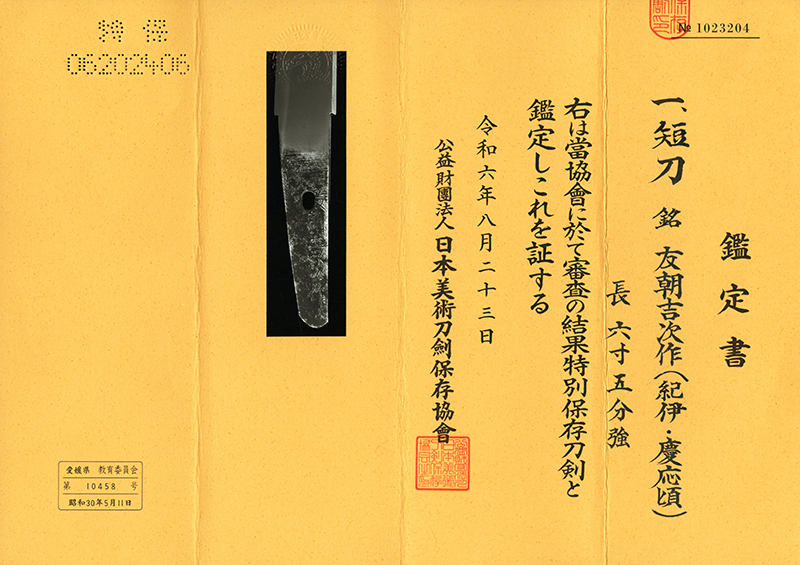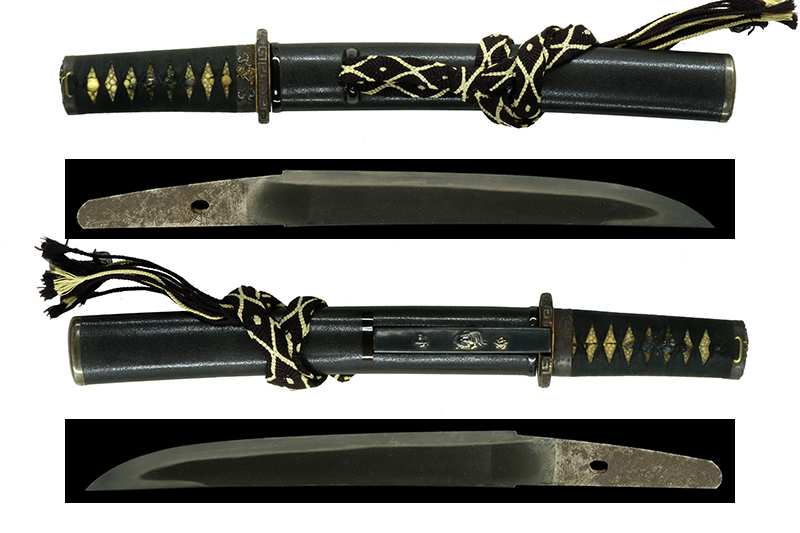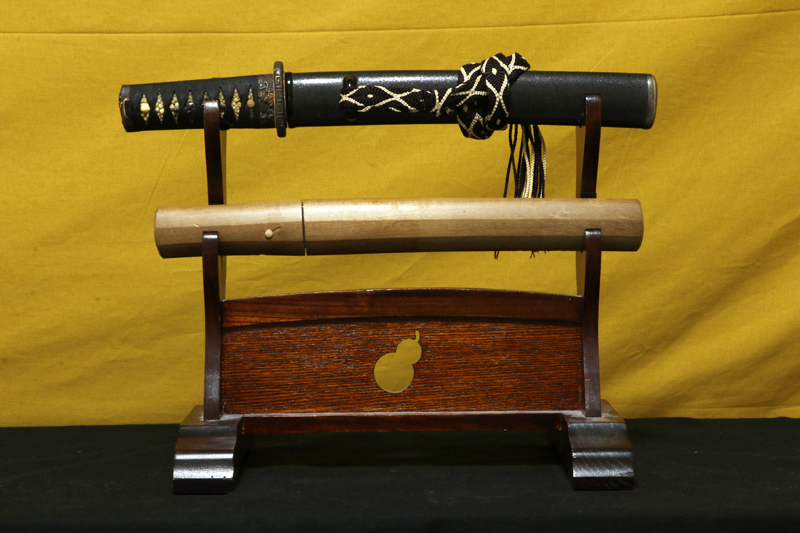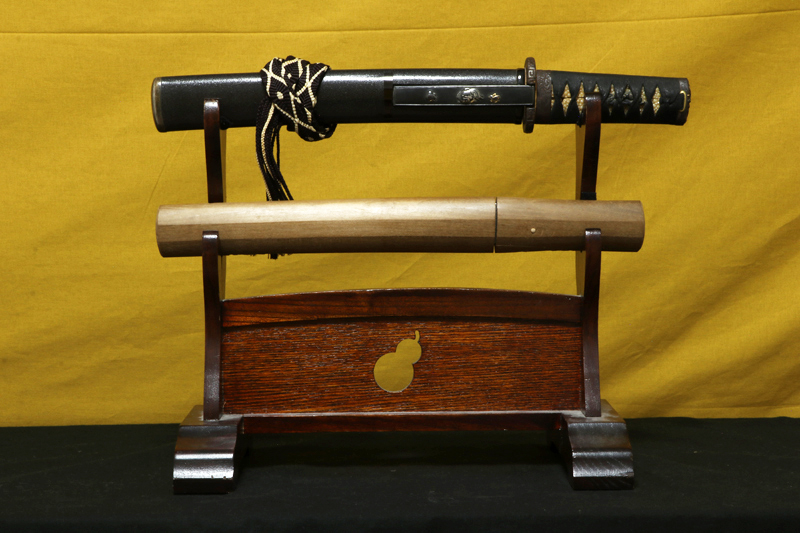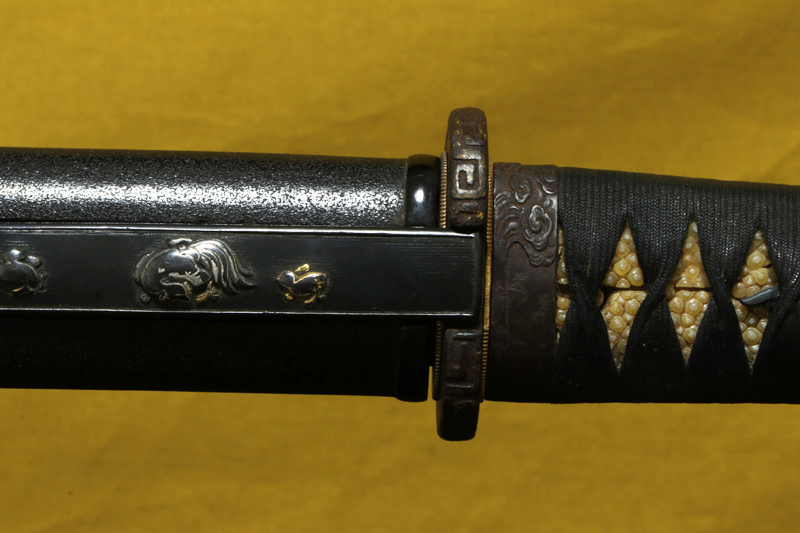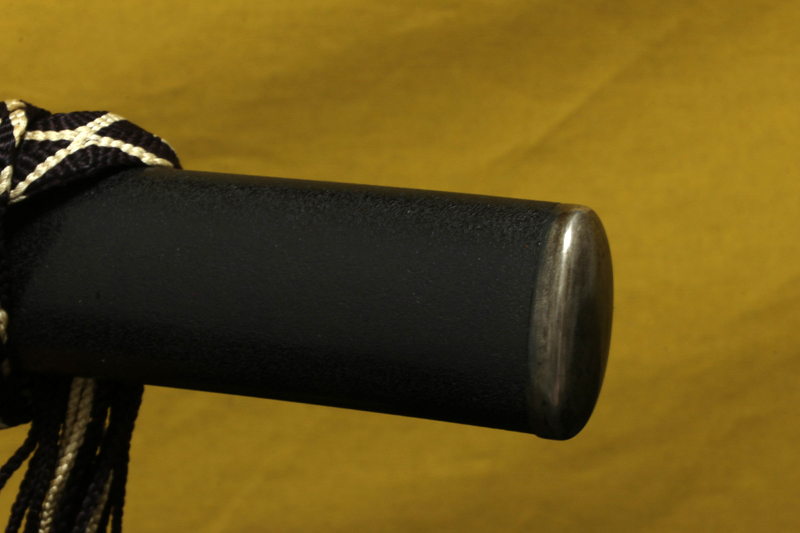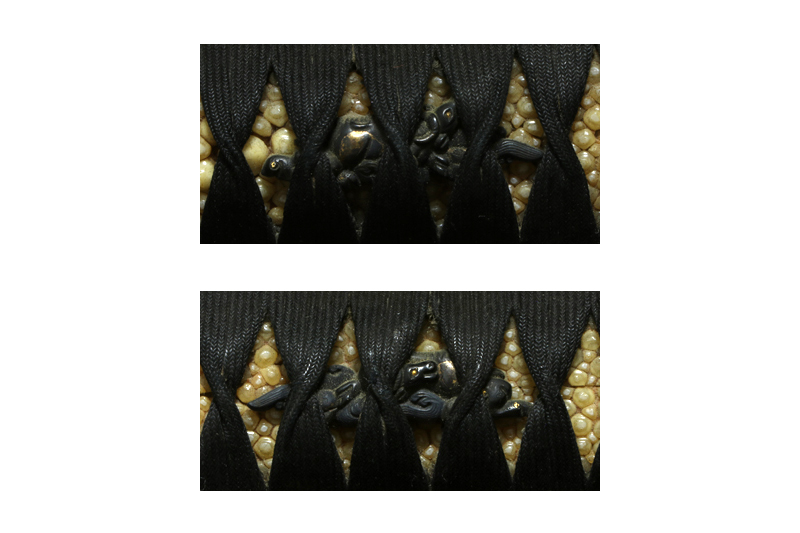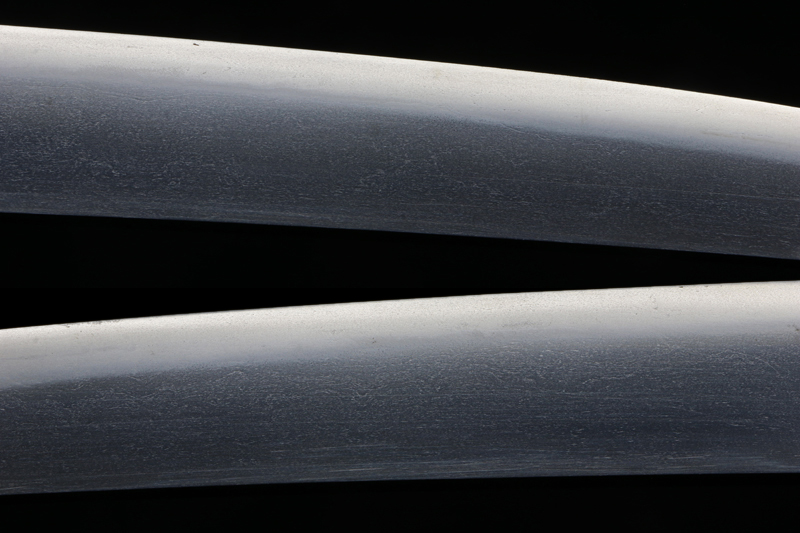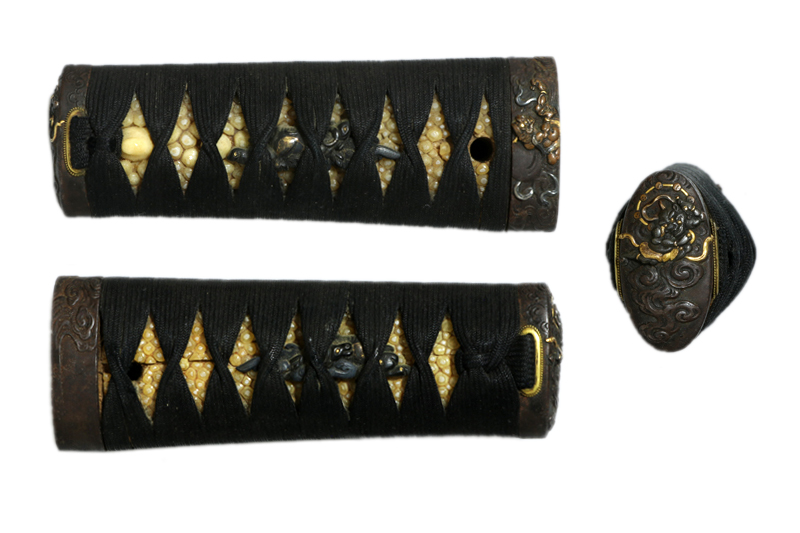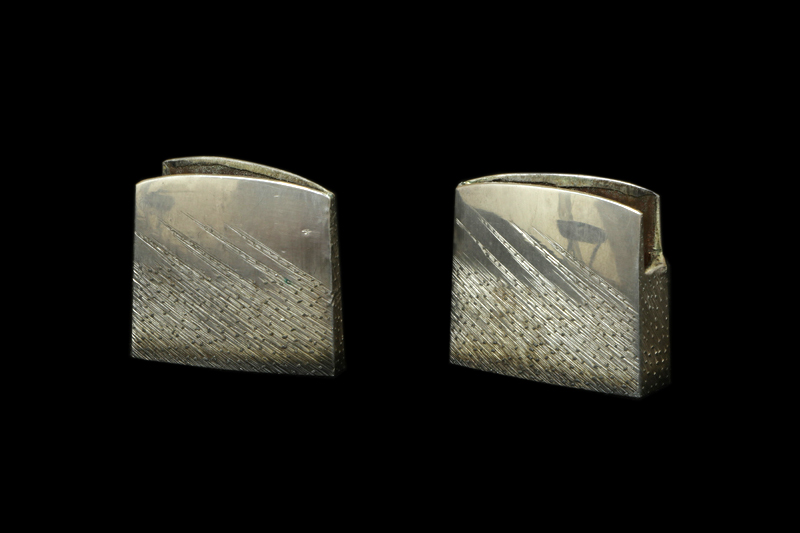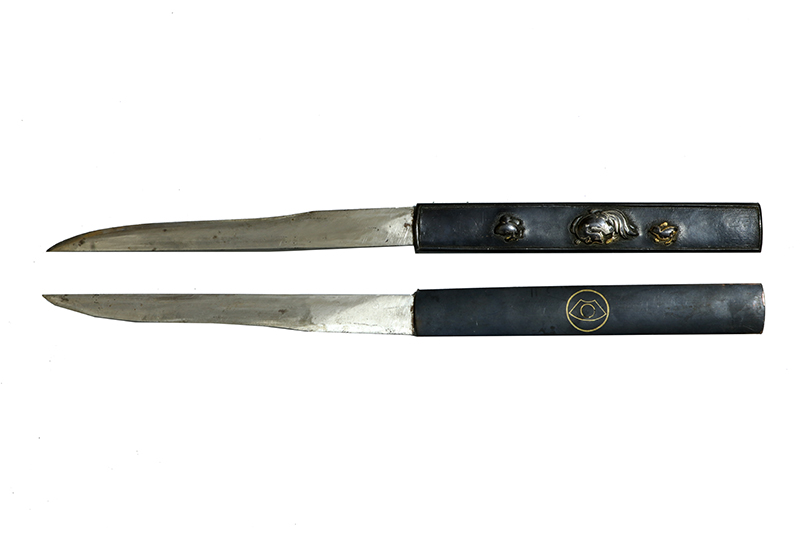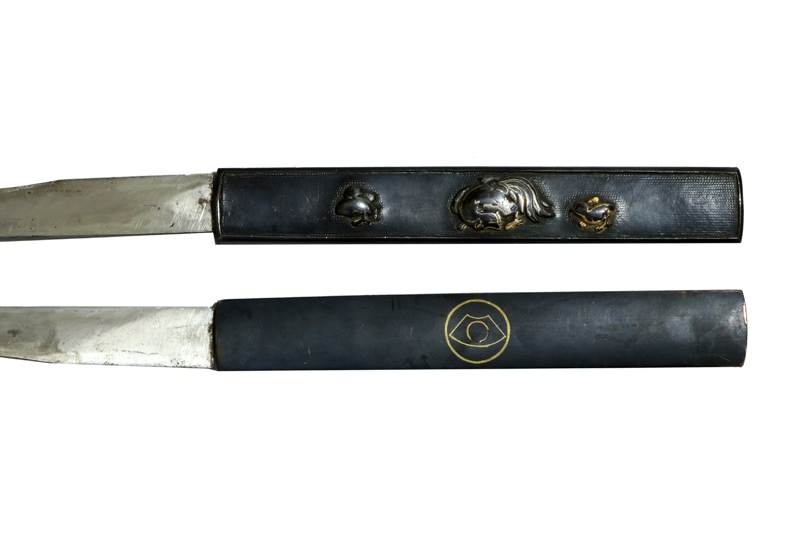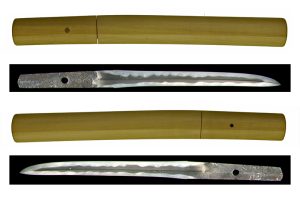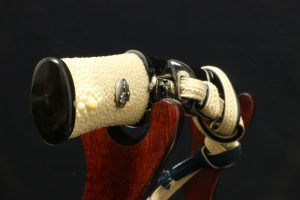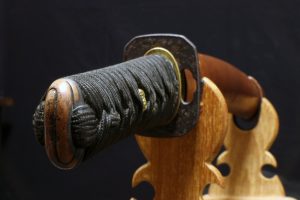説明
「刀姿 sword figure」
平造り庵棟、身幅広く重厚く、反り僅かふくら程良く枯れる。茎は生で化粧鑢がかかり、茎尻は刃上がりの栗尻。
「地鉄 jigane」
地鉄は板目肌に柾交じりで良く詰み、地景が沈み心に現れ、地沸付き、地鉄黒ずむ。
「刃紋 hamon」
刃紋は沸出来の中直刃、刃縁沸付き砂流しかかる。刃中は金筋が入る。釯子は刃紋成りに入り小丸に返る。
「特徴 detailed」
友朝吉次は、江戸時代後期に紀州和歌山で活躍した刀工です。「南紀住友朝吉次」とも銘を切っています。この刀工は「日本刀銘鑑」には記載されていませんが、「紀州の刀と鍔」に押し型が掲載されています。その系統は不明ですが、銘から室町時代の天狗鍛冶の末流であると考えられています。
本作は、長さの割に身幅が広く重が厚く、力強さと迫力を感じさせる一振りです。
Tomoasa Yoshitsugu was a swordsmith active in Wakayama, Kishu Province, during the late Edo period. He also signed his works as “Nanki-ju Tomotomo Yoshitsugu.” While this swordsmith is not listed in the Nihonto Meikan (Register of Japanese Swordsmiths), an oshigata of his work is included in Kishu no Katana to Tsuba (Swords and Tsuba of Kishu). Although his lineage is unclear, based on his signature, he is believed to be a descendant of the Tengu school of swordsmiths from the Muromachi period.
This piece has a wide and heavy blade relative to its length, giving it a sense of great strength and power.
「拵 Koshirae」
江戸時代後期に刀身と一緒に作られた小刀(ちいさかたな)拵です、金具類はセンスの良い物が使われており、コンディションは抜群です。
This is a Chisa-katana koshirae crafted together with the blade during the late Edo period. It features tastefully designed fittings, and the condition is outstanding.
ハバキ(habaki) :素銅地銀着一重の腰祐乗。
鍔(tsuba) :鉄地喰出し鍔。
縁頭(fhchikashira):鉄地風神雷神の図。
目貫(menuki) :赤銅地馬の図。
柄(tsuka) :鮫は親粒が付き巻鮫。柄巻きは正絹蛇腹糸の諸捻り巻き。
小柄(kotsuka) : 赤銅磨き地馬と鶉の図。
鐺(kojiri) : 銀無垢磨き地。
鞘(saya) :乾漆黒石目。
「刀剣の状態 condition of blade」
研:概ね良好です。
傷:欠点に成るような傷は有りません。
